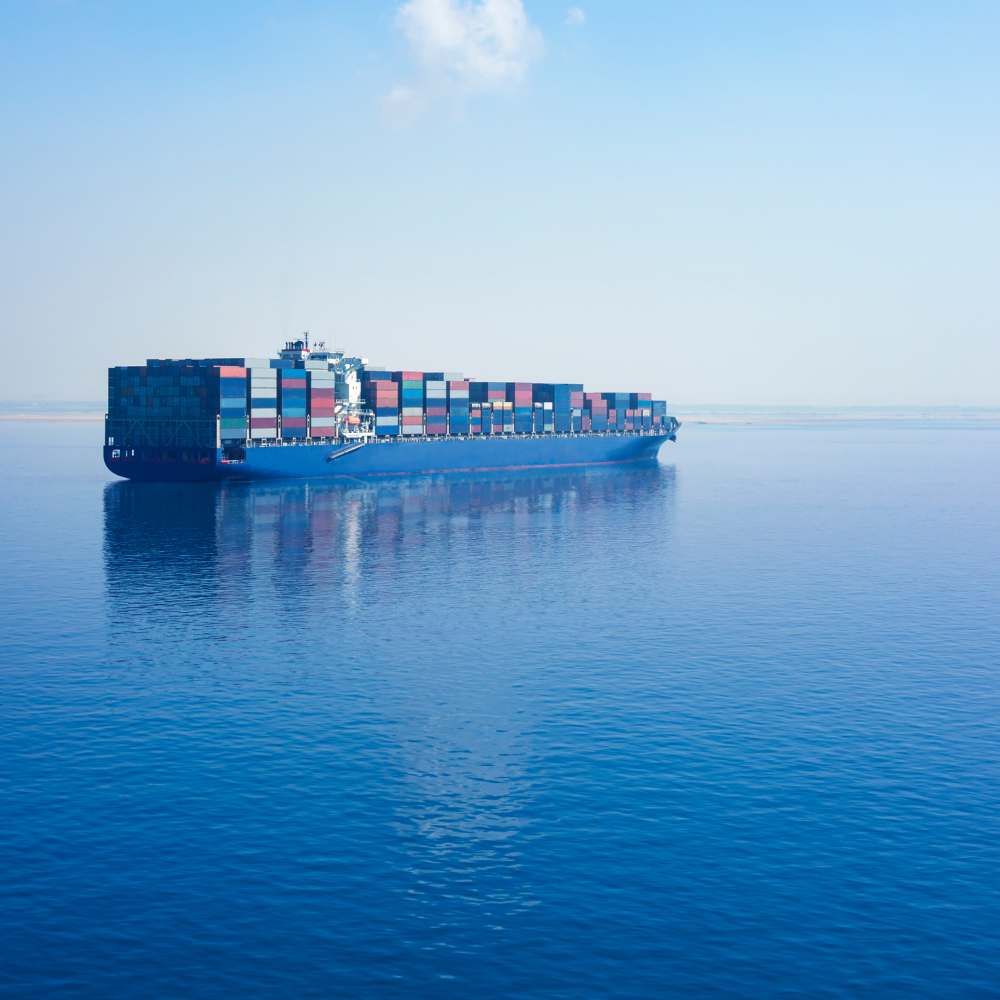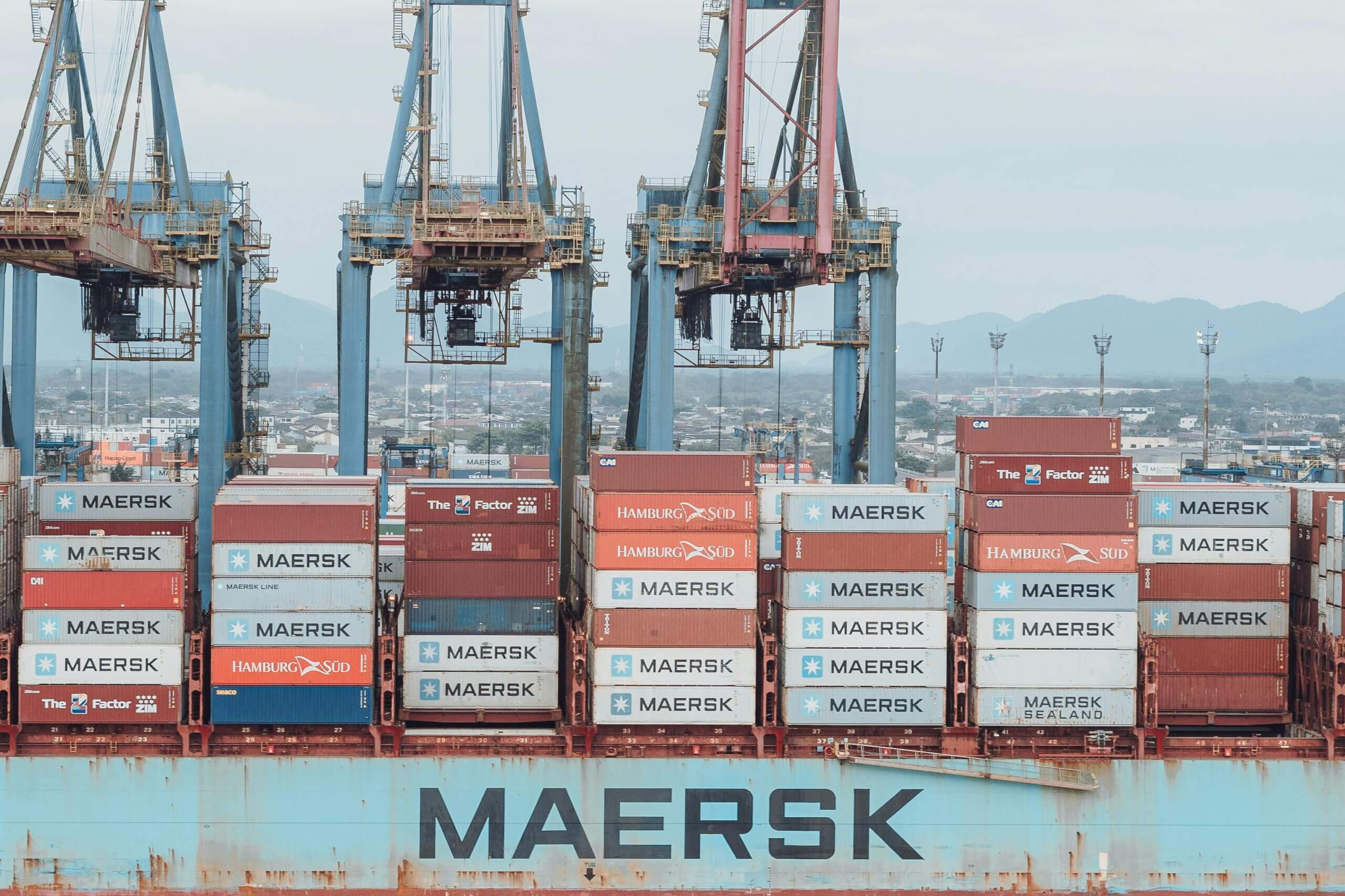Summary:
- Liberation Day Tariffs: On April 2, 2025, Trump announced a 10% baseline tariff, effective April 5th, with additional tariffs starting on April 9th to boost U.S. manufacturing.
- Retaliatory Actions: Countries like China, the EU, and Canada have retaliated with tariffs targeting U.S. exports such as automobiles and agricultural products.
- Air Freight Surge: Some regions, notably South Korea, have seen more than double the air freight volume in recent weeks. Much of this is likely driven by attempts to receive imports prior to the new tariffs.
Overview
During its first term, the Trump administration heavily utilized tariffs as a key policy tool, a stance reaffirmed during the 2024 election campaign. Since his inauguration, Trump has issued numerous executive orders to levy new tariffs against nations trading with the United States.
The administration’s stance is that global trade policies have historically been unfair to the United States, making it difficult for U.S.-based manufacturing to compete in foreign markets. As a result, much of the domestic manufacturing has moved to lower-cost countries such as China, Vietnam, Thailand, and others. With the newest and most extreme set of tariffs announced on April 2nd, the administration hopes to attract manufacturing back to the United States.
While the new tariffs have certainly raised tensions with key trading partners, the Trump administration may leverage these tariffs to negotiate more favorable trade deals. The administration’s strategy could involve using the threat of these tariffs as a bargaining chip to encourage other nations to lower their own trade barriers, open markets to U.S. goods, or implement policies that favor U.S. industries. By escalating tariffs and demonstrating the potential impact on global trade, the U.S. could seek to extract concessions from other countries, ultimately achieving trade agreements that might otherwise have been difficult to secure.
Liberation day tariffs
On April 2nd, Trump announced a new baseline 10% tariffs as well as additional tariffs outlined by the chart below.
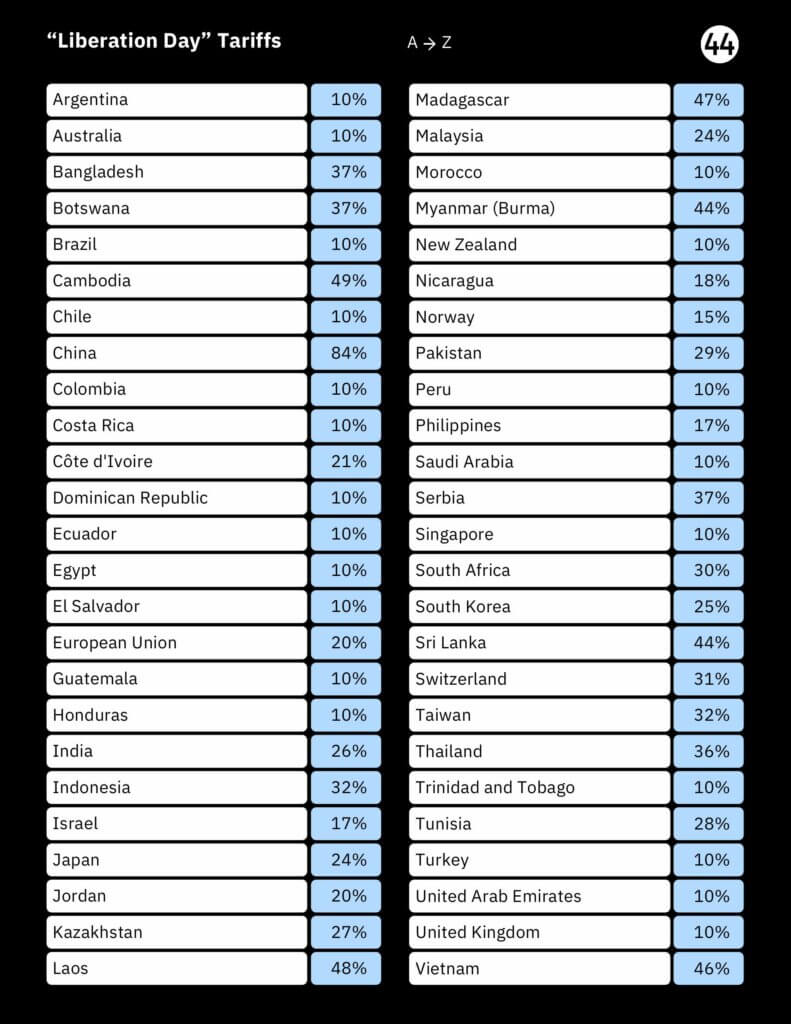
The 10% baseline went into effect on April 5th, and the additional tariffs began on April 9th. This comes after tariffs already passed, including 25% on automobile imports, steel and aluminum imports, and goods from Canada and Mexico not covered by the USMCA. A cumulative list can be found on project44’s tariff tracker page.
As expected, these tariffs are causing major ripple effects throughout global supply chains.
Impacts of the new tariffs
Short Term
Trump campaigned heavily on implementing new tariffs, which has led some companies to take proactive measures to pull forward as much inventory as possible before these tariffs take effect. This has been observed in ocean shipments but has recently been particularly noticeable in air freight. The chart below shows the percent change in the volume of air shipments into the United States compared to the average shipment volume during the same period the previous year.
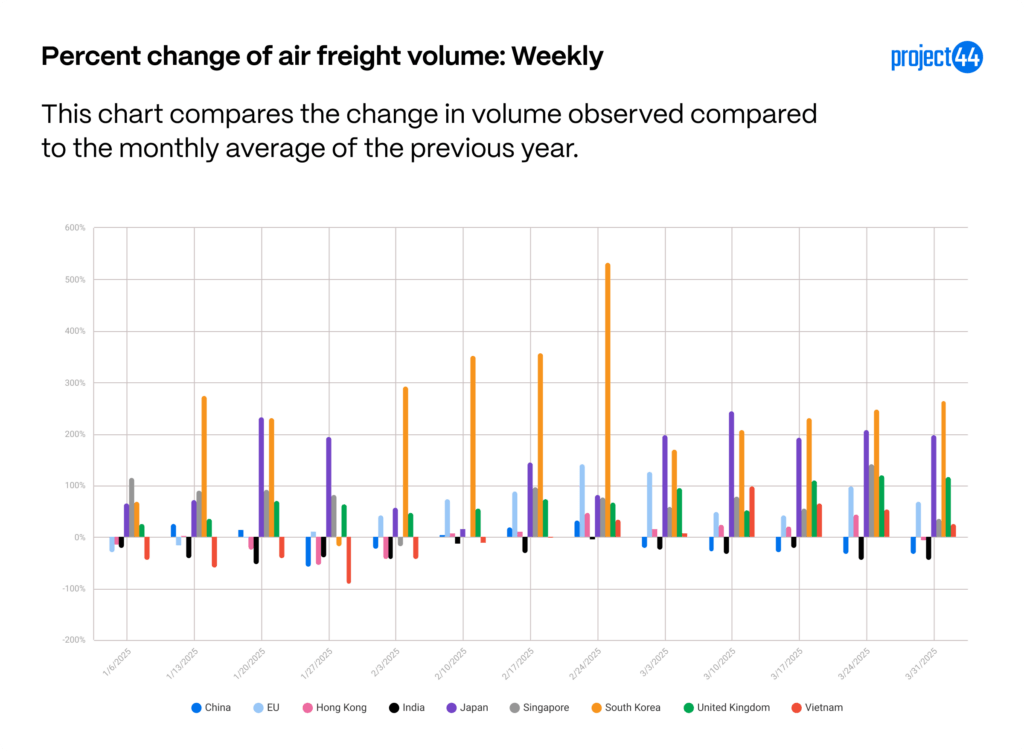
There are certain countries, like China and India, that have not seen major changes in volume, but countries and regions including the EU, Japan, the UK, and most notably South Korea have seen more than a 100% increase in weekly volume compared to 2024. Air freight from South Korea reached a peak of a 500% increase in volume. It is important to note that Korean skincare continues to rise in popularity among U.S. consumers, and new FDA regulations that began in February caused certain products to be discontinued or altered for the U.S. market. As a result, some of this influx may have been driven by these factors rather than tariffs.
Long term
In the long term, countries are likely to shift supplies to nations with lower tariffs, increase supplier diversification, and, even with these measures, will likely have to increase prices for U.S. consumers if these tariffs remain in place.
For the time being, very few companies that are heavily globalized seem to be opting to build out their manufacturing footprint in the United States. The hesitancy is likely due to the high cost of opening a new factory. While costs to open a new factory vary drastically based on location, size, equipment, and technology, new factories can cost billions of dollars. With Trump now in his second term, the uncertainty that these tariffs will remain in place during the next administration is enough to keep companies from making large-scale investments, which might otherwise not be the most cost-effective or efficient option.
Retaliation and the potential impact of tariffs on U.S. exports
In response to the tariffs imposed by President Donald Trump in 2025, several countries have implemented specific retaliatory measures targeting U.S. exports. Notable actions include:
China: On April 4, 2025, China announced a 34% additional tariff on all U.S. goods, effective April 10, 2025. This measure was a direct response to the U.S.’s 34% reciprocal tariff on Chinese imports. Subsequently, on April 9, China increased its tariffs to 84% on all U.S. goods, further escalating trade tensions.
European Union (EU): The EU has prepared a two-phase retaliatory plan against U.S. tariffs. The first phase involves reinstating tariffs on U.S. goods worth approximately €4.5 billion, including motorcycles, poultry, and fruit. The second phase, scheduled for later in 2025, targets additional U.S. products valued at €18 billion, such as steel, aluminum, and various agricultural items. These measures are set to be implemented on April 15, May 16, and December 1, 2025.
Canada: In retaliation, Canada imposed 25% tariffs on U.S. goods worth $20 billion, effective March 4, 2025. An additional $85 billion worth of U.S. products is subject to further tariffs, with specific measures targeting goods from politically significant U.S. states.
The chart below shows the main trade partners for U.S. exports by volume according to project44 data, so retaliation from these nations will cause the most impacts to U.S. companies.
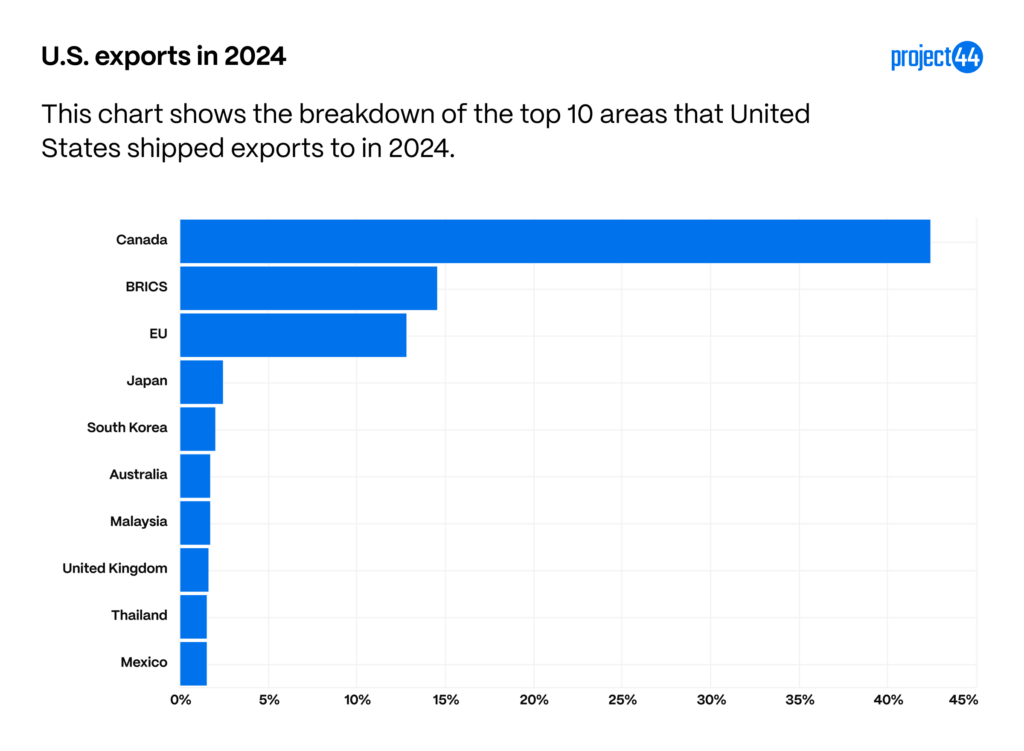
Actions like these make it hard for United States exports to be competitive in international markets. Certain U.S. exports, such as automobiles, industrial supplies, and agricultural products, are highly susceptible to retaliatory tariffs due to their significant trade volume with countries like China, the EU, and Mexico. For example, the U.S. faces potential retaliation on products like passenger cars, aircraft engines, and meats, which could disrupt industries relying on international markets. Retaliation could lead to reduced demand for these goods, impacting U.S. manufacturers and farmers, while also increasing the costs of these goods for consumers in both the U.S. and abroad.
Summary
The Trump administration’s reliance on tariffs as a central trade policy tool has led to significant shifts in global supply chains and trade dynamics. While the administration aims to revive domestic manufacturing by imposing new tariffs, the broader economic consequences include retaliatory tariffs from other countries, such as China, the EU, and Canada, which target key U.S. exports like automobiles, industrial goods, and agricultural products. These retaliatory measures threaten to make U.S. goods less competitive internationally, increasing costs for consumers and potentially disrupting industries reliant on global markets. As companies navigate these changes, the long-term impact of tariffs may lead to further supply chain diversification and higher prices, while uncertainty over future policy continues to deter large-scale investments in U.S. manufacturing.

